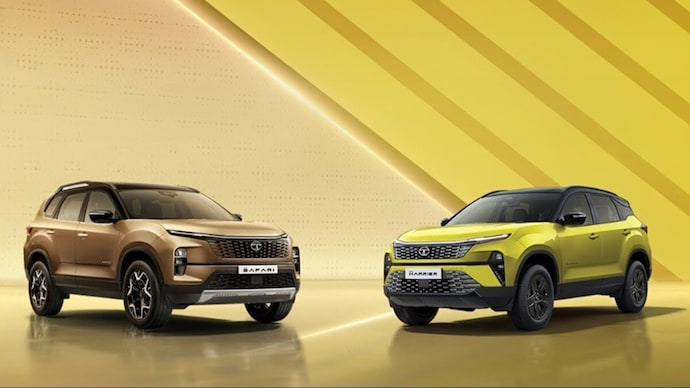Tata Motors is gearing up to shake up the SUV segment once again with the next-generation Harrier and Safari. While the launch is still some time away, the details emerging about these SUVs show that Tata is planning a big leap forward — especially with the addition of all-wheel-drive tech, which buyers have been waiting for.
New Platform, More Capability
Codenamed Taurus (Harrier) and Leo (Safari), these upcoming models won’t sit on the familiar Omega architecture that borrowed its bones from Land Rover’s D8 platform. Instead, Tata is developing a brand-new flexible architecture, more in line with Mahindra’s NFA platform. The big news here is that this new setup can handle multiple powertrains — petrol, diesel and full electric — and crucially, it can accommodate an AWD system.
This is huge for Tata fans because the lack of AWD on the current Harrier and Safari has been a sore point. Many buyers still miss the original Safari’s rough-road reputation that came with proper four-wheel-drive capability. Tata’s new platform promises to fix this gap.
More Space, Bigger Road Presence
Along with the new underpinnings, the next-gen Harrier and Safari are expected to grow in size too. Industry sources suggest both SUVs could get longer by about 100-200mm. This extra length will translate to more cabin room, especially for the three-row Safari where third-row comfort has always been a key point for buyers.
Fresh Engines, Including Electric
Under the hood, expect multiple engine options to keep different buyers happy. Tata’s new 1.5-litre direct injection turbo-petrol engine is expected to finally make its way into the Harrier and Safari. The tried-and-tested 2.0-litre diesel — sourced from Stellantis and now being developed in-house — will get an update too. And for those looking for a greener choice, the electric versions will evolve from the Harrier EV’s powertrain, which already uses a heavily reworked platform with AWD capability.
Modern Interiors and Advanced Tech
Besides the hardware, Tata Motors is also working on a next-gen electrical architecture developed in partnership with Chinese brand Desay. This means buyers can expect better infotainment systems, more connected features, and advanced autonomous driving aids. With the new flexible platform, these SUVs will be future-ready in more ways than one.
Why This Matters
The current Harrier and Safari have done well for Tata, but the lack of AWD and limited powertrain choices have kept some buyers on the fence — especially those who wanted true SUV capability for bad roads and trails. The next-gen models promise to fix that with bigger size, flexible engine options and, finally, proper all-wheel-drive tech. That makes them more ready to go up against rivals like the Mahindra XUV700, which already offers AWD and multiple engine choices.
Launch Timeline
While Tata hasn’t given an official launch date yet, these new-gen SUVs are expected to hit roads in a few years. So, if you’re planning to upgrade to a proper all-rounder SUV, it might be worth waiting for the next-gen Harrier or Safari.
Disclaimer: All details are based on the latest updates and industry sources. Specs and features could change closer to launch. For the latest info, stay tuned and connect with your nearest Tata Motors dealer when bookings open.
